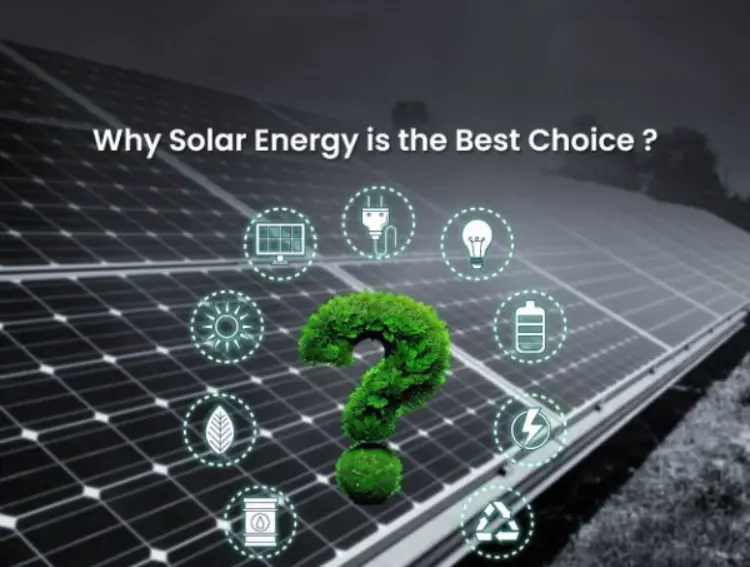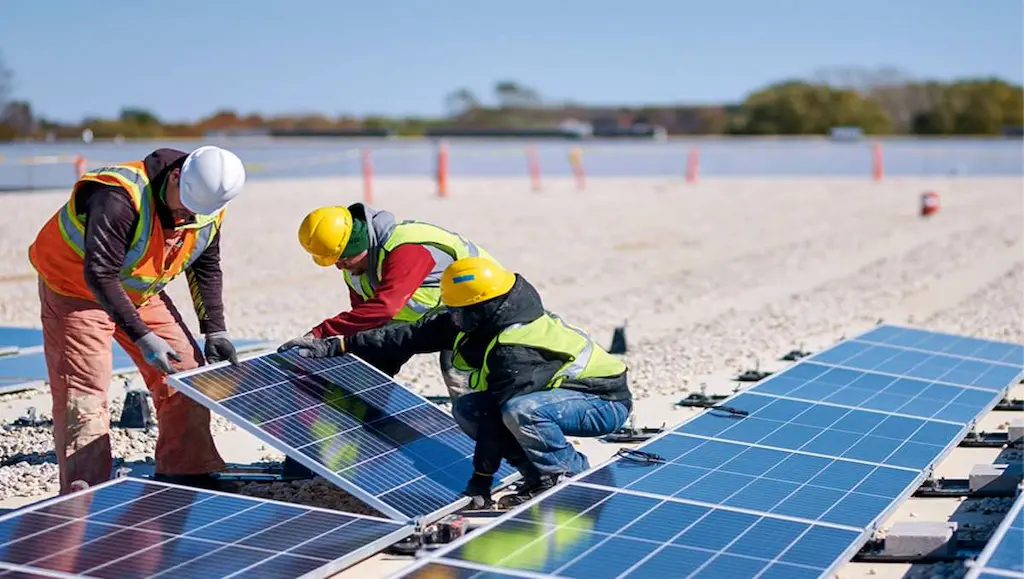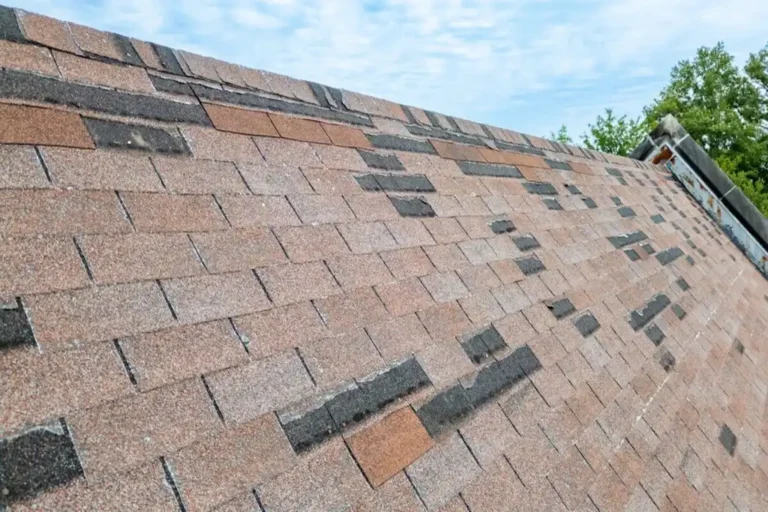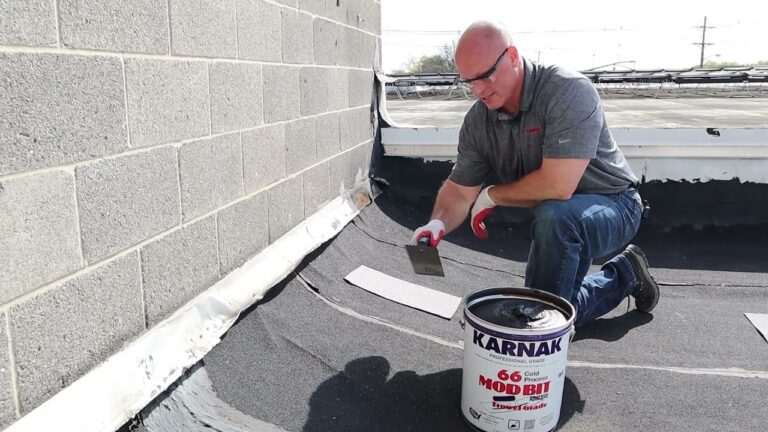Are you a homeowner in the USA looking to significantly cut down your electricity bills, reduce your carbon footprint, and boost your property’s value? The answer might be shining right above you: rooftop solar panels. In an era where energy independence and sustainability are more critical than ever, investing in solar energy has become an increasingly popular and financially savvy decision for millions of Americans. This comprehensive guide, crafted by an expert journalist and SEO specialist, will walk you through everything you need to know about going solar, from upfront costs and long-term benefits to installation specifics and what to expect years down the line, all backed by the latest data for 2024-2025.
The Financial Bright Side: Understanding Solar Panel Costs & Savings
The first question on many homeowners’ minds is, “How much does it cost?” While the initial investment can seem substantial, understanding the breakdown and available incentives reveals a much brighter financial picture.
Average Costs Before & After Incentives
As of 2024-2025, the average solar panel installation cost for a typical U.S. home (around a 6 to 8 kW system) ranges between $15,000 and $22,500 before incentives. This translates to an average cost of about $3.03 to $3.67 per watt. However, this is just the starting point.
The most significant game-changer for solar affordability is the Residential Clean Energy Tax Credit, often referred to as the federal solar tax credit or Investment Tax Credit (ITC). Thanks to the Inflation Reduction Act (IRA), this credit is currently 30% of eligible installation costs and is extended through 2032. This means a $20,000 system could see a $6,000 reduction in your federal tax liability, bringing the net cost down to $14,000.
Factors Influencing Cost:
- System Size: Larger homes or higher energy consumers need bigger systems, leading to higher costs.
- Panel Type: Monocrystalline panels are generally more efficient and durable but cost more ($1.00 – $1.50 per watt) than polycrystalline ($0.90 – $1.50 per watt) or thin-film panels ($0.50 – $1.50 per watt).
- Installation Complexity: Roof type, pitch, shading, and ease of access can affect labor costs.
- Additional Hardware: Batteries (like a Tesla Powerwall, which can add over $9,200), inverters, and mounting hardware contribute to the total.
- Location: State and local incentives, permitting fees, and regional labor rates vary significantly. For example, costs in California might be lower per watt than in Massachusetts due to market maturity and competition.
Long-Term Savings: A Powerful Return on Investment

The real financial benefit of solar panels unfolds over their long lifespan. The average U.S. household can expect to save around $1,500 annually on electricity bills by going solar. Over 25 years, these savings can accumulate to tens of thousands of dollars, often exceeding the initial investment.
Example Savings (Vary by State):
| State | Median System Size (kW) | Median Estimated 25-Year Savings | Equivalent Monthly Savings |
|---|---|---|---|
| California | 6.715 | $64,403 | $214.68 |
| Massachusetts | 9.085 | $67,009 | $223.36 |
| New Jersey | 8 | $30,856 | $102.85 |
| Texas | 10.125 | $17,518 | $58.39 |
| Arizona | 9.6 | $10,779 | $35.93 |
Source: Palmetto.com, data as of Spring 2024
These savings are primarily driven by offsetting your electricity consumption, which can be substantial given the average U.S. electric bill is around $145 per month (based on 2024 data). With a typical 7.4 kW home solar system producing around 999 kWh/month, it’s often enough to completely cover the average household’s energy needs of 855 kWh/month.
Beyond Bill Savings: Additional Financial Benefits
- Increased Home Value: Homes with solar panels often sell for a premium and faster than those without.
- Net Metering: Many states offer net metering policies, allowing you to sell excess electricity generated by your panels back to the grid for credits on your bill. While policies vary (e.g., California’s recent changes affect buyback rates), this can still provide significant value.
- Protection Against Rising Electricity Rates: Your solar panels provide a stable electricity cost, shielding you from future utility rate increases.
The Longevity of Solar: A Durable Investment
Solar panels are built to last, offering decades of clean energy production.
Average Lifespan
The typical lifespan of solar panels ranges from 25 to 30 years. Many manufacturers offer performance warranties that guarantee your panels will produce at least 80% of their original output for 20-25 years. In reality, well-maintained solar panels can continue to produce power far beyond this timeframe, with some of the earliest panels still functioning after 60 years!
Degradation Rate
Like any technology, solar panels experience a gradual decline in efficiency over time, known as degradation. The median solar panel degradation rate is approximately 0.5% per year. This means that after 20 years, your panels should still be producing around 90% of their original output. Higher-quality panels typically degrade at a slower rate.
Why Solar Panels Are a Better Choice: Beyond the Financials
The benefits of rooftop solar extend far beyond monetary savings, contributing to a more sustainable and resilient future.

- Environmental Impact: Solar panels produce clean, renewable energy, significantly reducing your reliance on fossil fuels and lowering your carbon footprint. This directly combats climate change and improves air quality.
- Energy Independence: Generating your own electricity lessens your dependence on the traditional power grid, making your home more resilient to outages and market fluctuations.
- Technological Advancements: Solar technology continues to evolve, with panels becoming more efficient and aesthetically pleasing. Bifacial panels, for instance, can capture sunlight from both sides, increasing energy output.
- Job Creation & Economic Growth: The solar industry is a significant job creator in the U.S., employing nearly 280,000 people as of December 2024. The total solar market value reached $70.4 billion in 2024.
Addressing Common Concerns & Potential Side Effects
While the benefits are clear, it’s natural to have questions about the practicalities of solar ownership.
Short-Term Issues
- Upfront Cost: As discussed, this is the main hurdle, though incentives significantly reduce it.
- Installation Time: The installation process itself can take a few days to a couple of weeks, depending on system size and complexity, following permitting and design phases.
- Permitting and Interconnection: Navigating local permits and utility interconnection agreements can be a bureaucratic process, often handled by your solar installer.
Side Effects (Generally Minor)

- Aesthetics: While modern panels are designed to be sleek, some homeowners may have aesthetic concerns about their appearance on the roof.
- Roof Condition: A structurally sound roof is essential. If your roof is old or nearing the end of its lifespan, it’s often more cost-effective to replace it before solar installation. Learn more about how to get insurance to pay for roof replacement. You can also perform a DIY roof inspection to spot potential damage early. This avoids the additional cost of removing and reinstalling panels later for a roof replacement.
- Maintenance: Solar panels generally require minimal maintenance, primarily occasional cleaning to remove dirt, dust, or debris that might reduce efficiency. For expert tips on how to clean solar panels on your roof, refer to our guide. Regular inspections can also identify potential issues.
- Performance in Inclement Weather: Panels are designed to withstand various weather conditions, including snow and hail. While heavy snow can temporarily reduce output, it typically slides off due to the panel’s angle and heat absorption. Cold weather can actually increase panel efficiency.
- Net Metering Policy Changes: As seen in California, net metering policies can change, impacting the financial returns from selling excess energy. It’s crucial to understand your local policies.
The Installation Journey: What to Expect

Going solar involves several key steps, typically managed by your chosen solar provider.
- Initial Consultation & Site Assessment: A solar company will assess your home’s energy consumption, roof suitability (size, angle, shading), and local regulations.
- System Design: Engineers design a customized solar system based on your energy needs and roof characteristics. This includes selecting panel type, inverter, and mounting hardware.
- Permitting & Approvals: The solar company handles all necessary permits from local authorities and utility interconnection agreements.
- Installation: Qualified technicians install the racking system, mount the solar panels, and connect the electrical wiring to your home’s electrical panel and the grid. This typically takes 1-3 days for a residential system.
- Inspection & Interconnection: After installation, local authorities and the utility company will inspect the system to ensure it meets safety and technical standards. Once approved, your system is “interconnected” to the grid, and you can start generating your own electricity.
- Monitoring: Most systems come with monitoring capabilities, allowing you to track your energy production and consumption via an app or online portal.
The State of Solar Adoption in the USA: A Growing Movement
The adoption of rooftop solar is on a remarkable upward trajectory across the United States. As of February 2024, over 4.2 million US homes (approximately 4.96% of all eligible single-family homes) are equipped with rooftop solar panels, with a total estimated between 105 and 126 million individual solar panels installed nationwide.
Key Statistics (as of 2024):
- Total US Solar Homes: 4,227,503
- Total Solar Systems Installed in the U.S.: 5,425,045 (including residential, commercial, and utility-scale)
- Total Solar Capacity: 235.7 GW, enough to power 40.7 million homes.
- New Capacity Added in 2024: A record-breaking 50 gigawatts (GWdc), representing 66% of all new electricity-generating capacity added to the U.S. grid.
- Top States for Residential Installations (number of solar homes):
- California: 1,866,359
- Arizona: 290,786
- New York: 202,406
- Florida: 195,136
- New Jersey: 181,294
While California still leads by a significant margin, other states are rapidly increasing their solar footprint, driven by supportive policies and decreasing costs.
Frequently Asked Questions (FAQs)
Here are answers to some of the most common questions homeowners have about going solar:
What is net metering?
Net metering is a policy that allows you to send any excess electricity your solar panels generate back to the utility grid. In return, you receive credits on your electricity bill, effectively reducing or even eliminating your monthly electricity costs. Policies vary by state and utility.
Do I need to replace my roof before installing solar panels?
It's highly recommended to assess your roof's condition. If your roof is old or nearing the end of its lifespan, it's often more cost-effective to replace it before solar installation. This avoids the additional cost of removing and reinstalling panels later for a roof replacement.
What is the federal solar tax credit, and how does it work?
The Residential Clean Energy Tax Credit (or ITC) allows you to claim 30% of the eligible cost of your solar panel system as a credit on your federal income taxes. This is a dollar-for-dollar reduction in your tax liability, not a deduction. It's available through 2032.
Will installing solar panels increase my home’s value?
Yes, homes with solar panels generally sell for a premium and often sell faster than comparable homes without solar. Studies have shown a significant increase in property value.
Do solar panels require a lot of maintenance?
No, solar panels require minimal maintenance. Primarily, they need occasional cleaning to remove dirt, dust, or debris that might reduce efficiency. Rain often helps keep them clean. Regular professional inspections are recommended every few years.
What happens to my solar panels on cloudy days or at night?
On cloudy days, solar panels will still produce electricity, but at a reduced rate. At night, they do not produce electricity. To maintain power during these times, you can draw electricity from the grid (if connected) or store excess energy generated during the day in a solar battery storage system.
How long do solar panels last?
Solar panels typically last for 25 to 30 years, with many manufacturers offering performance warranties for this period. Many panels continue to produce power effectively even beyond this timeframe.
How much money can I save on my electricity bill with solar panels?
The average U.S. household can expect to save around $1,500 annually on electricity bills. Over 25 years, these savings can accumulate to tens of thousands of dollars, often exceeding the initial investment. Actual savings vary by location and energy consumption.
How long does the solar panel installation process take?
While the entire process from initial consultation to system activation can take several weeks or months due to permitting and design, the physical installation on your roof typically takes only 1 to 3 days for a residential system.
How much does it really cost to install solar panels on my roof?
The average cost for a typical U.S. home (6-8 kW system) is between $15,000 and $22,500 before incentives. However, with the 30% federal tax credit, the net cost can be significantly reduced. For example, a $20,000 system could cost you $14,000 after the credit.
How do I know if my roof damage is covered by insurance?
Check your policy for coverage of sudden events like storms or hail; wear and tear or neglect isn’t covered, per the Insurance Information Institute. Contact your insurer or use our tool to draft a claim letter with the right details.
What is the risk of leaks with new flashing if not installed properly?
Improper installation, like cutting below old lines, can cause leaks within 2 years, so professional work is crucial.
How do you secure a tarp on a roof without nails?
Conclusion: Is Rooftop Solar Right for You?
Rooftop solar panels offer a compelling blend of financial savings, environmental responsibility, and energy independence for homeowners across the USA. With robust federal incentives, continually decreasing costs, and a long operational lifespan, the decision to go solar is becoming increasingly attractive. While the journey involves an initial investment and some planning, the long-term benefits of reduced electricity bills, increased home value, and a positive impact on the planet make it a worthwhile consideration for any forward-thinking homeowner.
By understanding the costs, benefits, and installation process detailed in this guide, you are now equipped with the knowledge to make an informed decision and potentially harness the power of the sun for your home.





